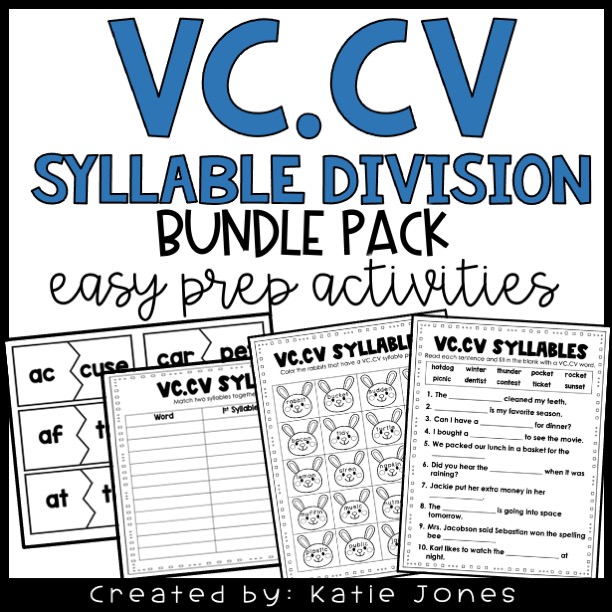The VCCV (vowel-consonant-consonant-vowel) rabbit syllable division is one of the easiest syllable divisions to teach students. It quickly moves kids past reading simple CVC (consonant-vowel-consonant) words, such as cat, dog, and pig, to multi-syllabic words, such as rabbit, helmet, and basket.
As we discuss various syllable divisions, you will notice each syllable division has been given an animal name. These animal names were provided during a 60 hour Orton Gillingham training I attended. The animal names help students remember the pattern, as each animal name follows the rule.
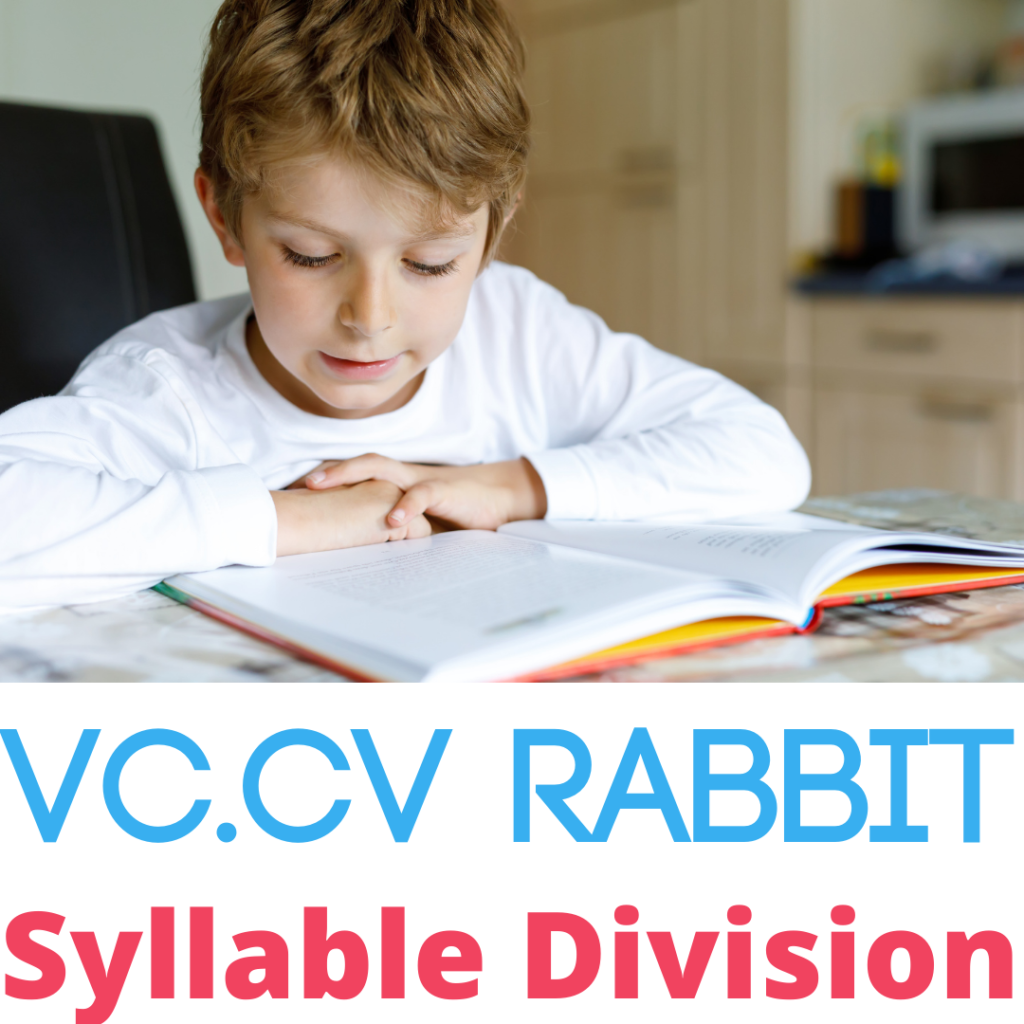
Step 1:
Before jumping into the syllable division, I spend time discussing with students the difference between a vowel and consonant. It is essential they have a solid understanding of this before moving forward.
Step 2:
Next, I have students practice counting syllables. This can be done in different ways:
- Students can use their fingers to count out the syllables.
- Students can feel under their chin as they say a word. As they say they word, they can hear the different syllables. (I have found this method to be more difficult for many students.)
- Students can clap out the syllables.
- Students can use a manipulative, such as a fidget popper, to pop each sound. (This is my favorite manipulative to use. You can find it on Amazon HERE.
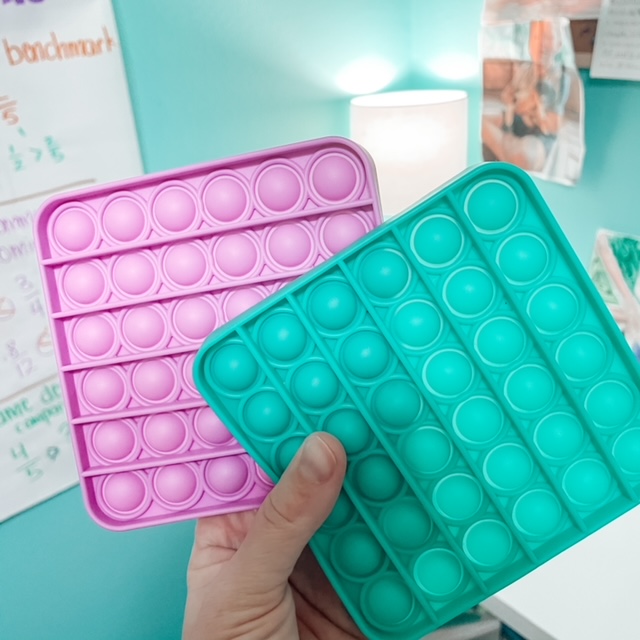
Step 3:
After students have shown mastery of vowels, consonants, and counting syllables, you can move on to explicitly teaching them the syllable division. Explicit instruction is a crucial step for all students, but 100% necessary for dyslexic learners. Understanding syllable division rules will help students read and spell unknown words.
The rule states that if two consonants are between two vowels, you divide the word between the consonants.
Step 3:
I like to have students label the consonants and vowels in each word before attempting to read it.
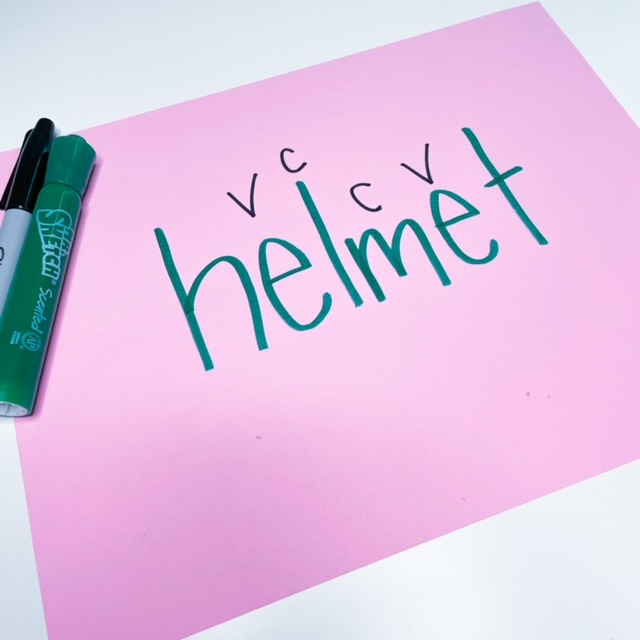
After labeling, I’ll have students put a dot between the two consonants to represent the syllable division. During my Orton Gillingham training it was suggested to use a dot instead of a line. Depending on the word and the line the student draws, the line can end up looking like the letter “l.” This can be problematic when students are trying to blend the syllables.
Students will then draw a scoop to show each syllable. From here, students can blend each individual syllable and the blend the two syllable together to form a word.
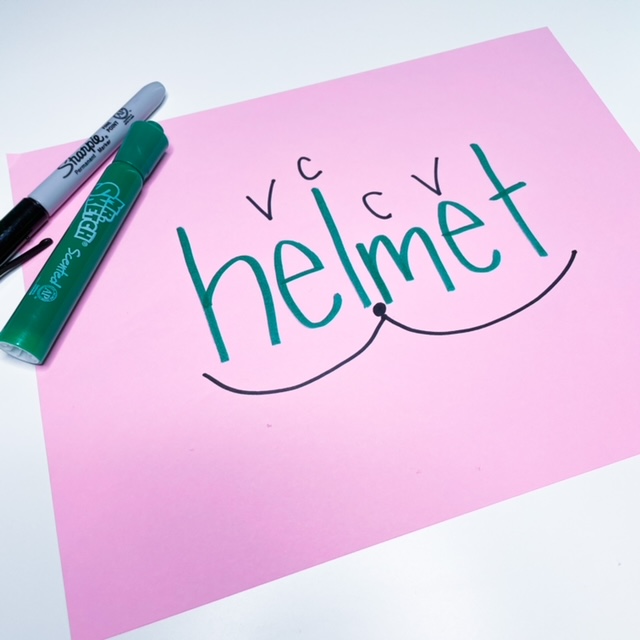
Step 5:
Students can then practice reading a variety of words on their own that follow the rabbit rule. Here are ten words you can use for practice:
basket
hiccup
ribbon
velvet
ticket
pocket
nutmeg
tablet
sudden
rocket
Step 6:
After students have shown success with reading, it is important to practice spelling. Anytime you are teaching a skill in reading, it should always be taught and practiced with spelling. It is important for students to see the connection between reading and spelling.
Step 7:
After explicit instruction and guided practice, students can begin practicing the skill independently through a variety of activities.
Students can color and cut various pictures and glue them under the correct word. This would require students to correctly divide the word into two syllables and read accurately.
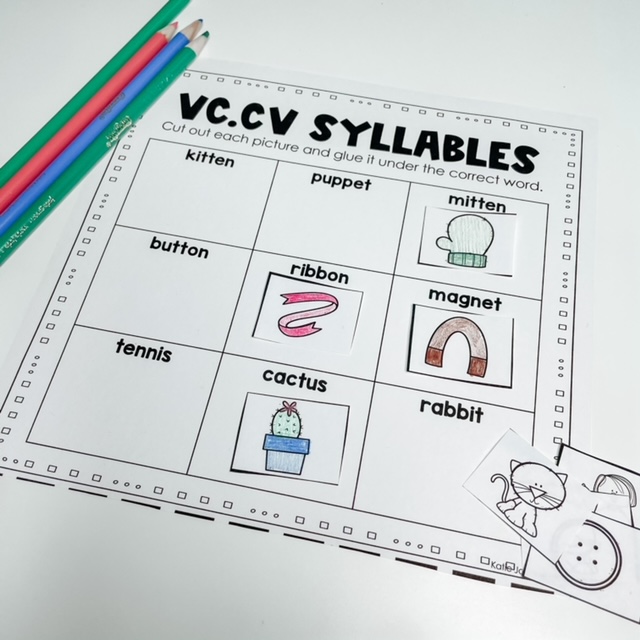
On this worksheet students will be able to practice spelling words. I like to encourage students to go back and label their vowels and consonants after spelling. I then will ask them to show the division and swoops. This helps students get in the habit of being their own spell checker.

You could also have students play games for extra practice during center activities. One of the easiest games to play is a syllable matching game. Students have to match two syllables together to form a rabbit word. You can grab my pre-made game (just cut and go) HERE for $1. You can also write the words on index cards and cut between the syllables or have the students do this to create their own game!
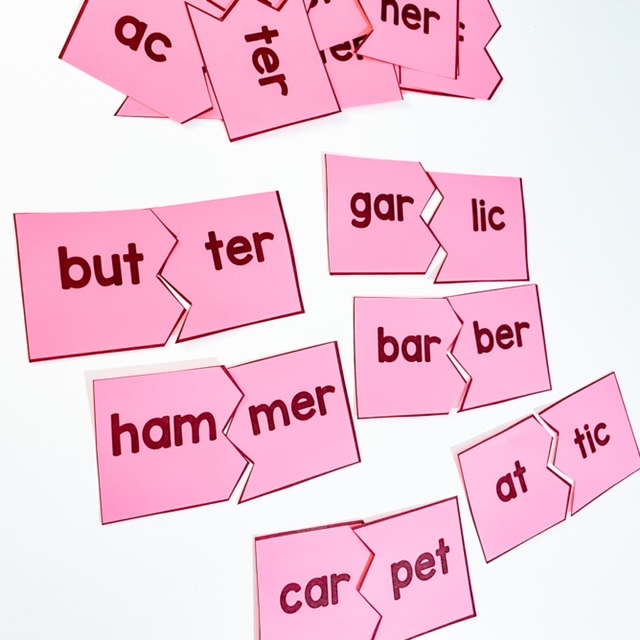
The most important thing to remember is explicit instruction needs to occur before practice. You can grab my entire bundle of VCCV rabbit word practice by clicking HERE.
There are 5 other syllable division types that can and should be taught after VCCV rabbit. Head to my 6 Syllable Divisions Students Should Know post to learn more about the other types.
You can also grab my complete pack of syllable division posters by click HERE.


